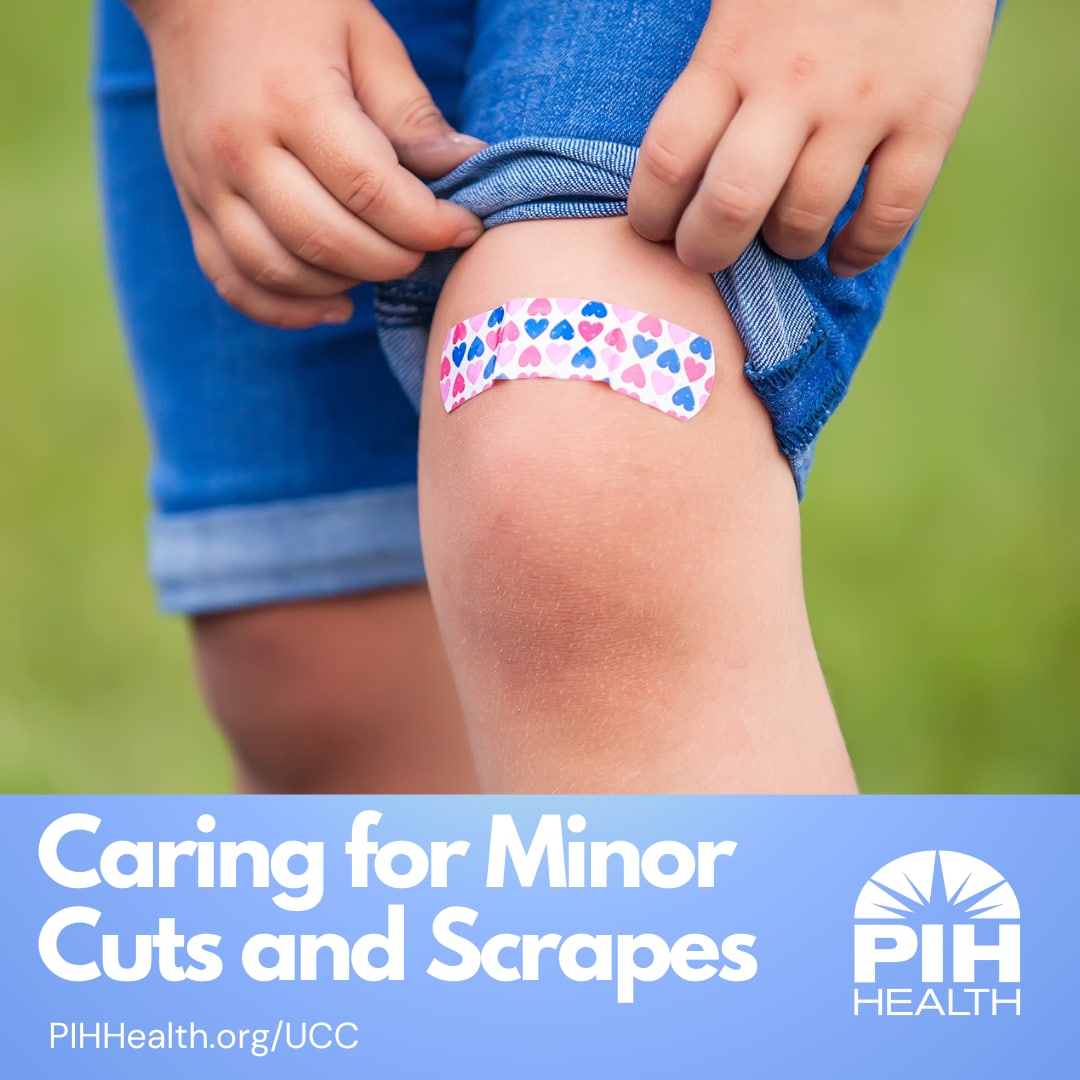Caring For Cuts and Scrapes
Cuts and scrapes happen regularly, and many can be effectively managed at home. Understanding proper cleaning and treatment techniques for cuts, as well as knowing when to consult a healthcare professional, can lower infection risks and promote faster healing.
Determine if the Cut Needs Medical Attention
Before treating your cut, assess whether it can be treated safely at home or if medical attention is needed. In addition, if you have not had a tetanus shot in more than 10 years, or can’t remember, visit a PIH Health Urgent Care Center.
Here are qualities of a cut that requires medical attention.
- The cut reveals fat, muscle, or bone
- The wound has irregular and widely separated edges
- Blood is flowing from cut and will not stop
- The cut has become infected
- You have a fever of more than 100.4°F (38°C)
- The wound is located on the wrist, hand, or finger and any of the joints do not work
- The wound is located on the foot, ankle, or toes and any of the joints do not work
- The wound is an animal or human bite

Minor Cut Care
If you are not experiencing these symptoms, here are ways to treat a minor cut:
Apply pressure with a clean tissue or gauze to stop bleeding. Keep the gauze on the wound until bleeding stops. This will allow a clot to form. The bleeding should stop within a few minutes. If the blood persists, seek medical help. You may need stitches.
When the bleeding stops, rinse the wound with cool water. With a soft washcloth and soap, clean the skin around the cut. Irritation to the cut may occur if the soap has direct contact with the cut. It is not recommended to put hydrogen peroxide or iodine on the cut. This will harm the living cells.
To protect the cut, cover it with a bandage. Bandages can prevent large cuts from scarring. If necessary, use antibiotic ointment to help prevent infection and keep the wound hydrated during the recovery process.
For immediate care, visit a PIH Health Urgent Care Center. Find locations and view wait times at PIHHealth.org/WaitTime.